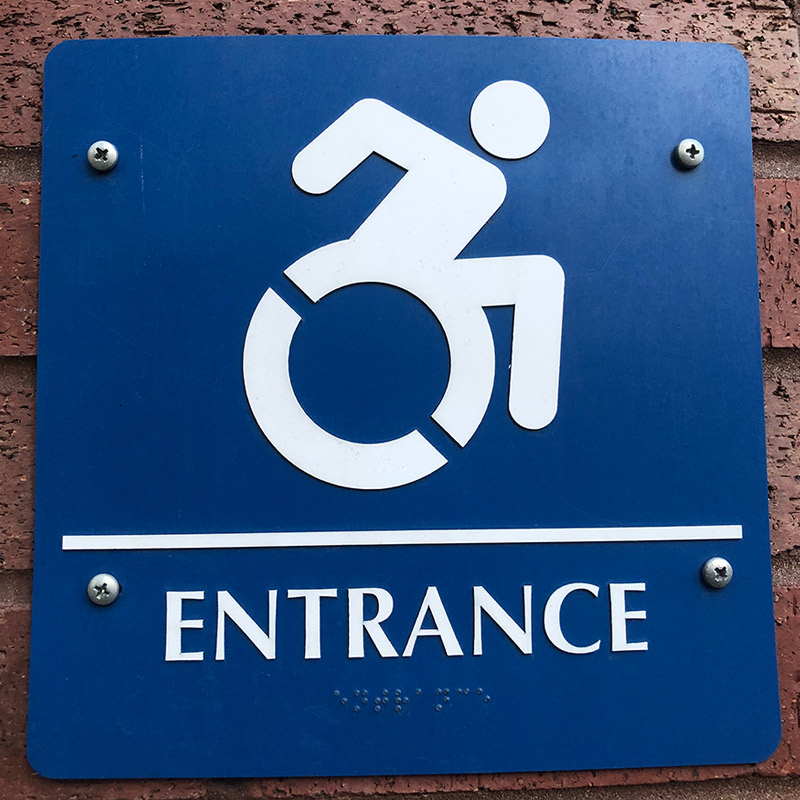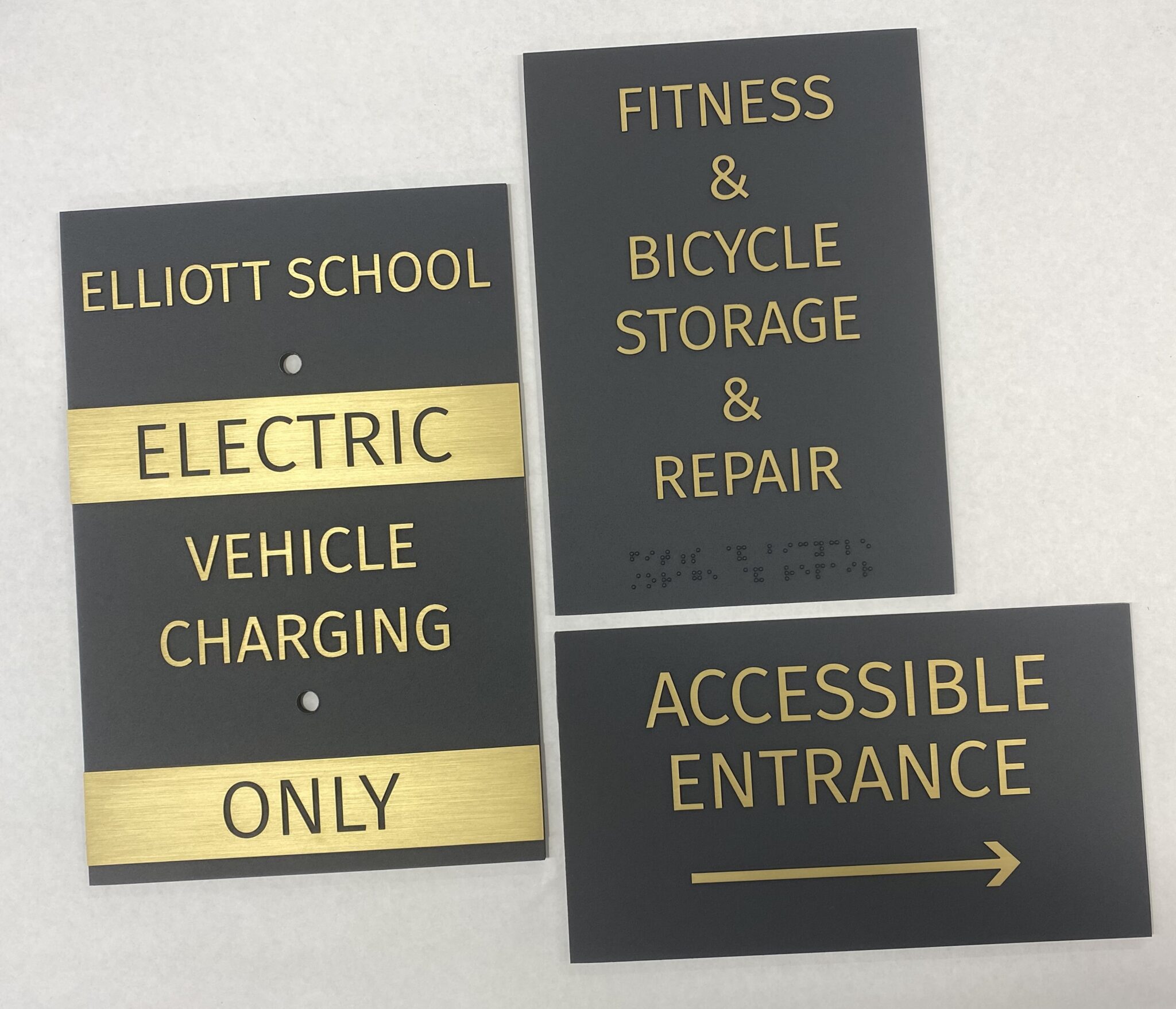Check out the Significance of ADA Signs in Public Spaces
Check out the Significance of ADA Signs in Public Spaces
Blog Article
Discovering the Trick Features of ADA Indicators for Boosted Availability
In the realm of availability, ADA indications serve as quiet yet effective allies, making certain that rooms are navigable and comprehensive for people with handicaps. By integrating Braille and tactile elements, these signs damage barriers for the visually impaired, while high-contrast color plans and clear typefaces cater to diverse aesthetic requirements.
Value of ADA Conformity
Guaranteeing compliance with the Americans with Disabilities Act (ADA) is important for promoting inclusivity and equivalent access in public areas and workplaces. The ADA, established in 1990, mandates that all public facilities, employers, and transportation solutions accommodate people with impairments, guaranteeing they appreciate the same civil liberties and opportunities as others. Conformity with ADA standards not just satisfies legal commitments but additionally enhances a company's reputation by demonstrating its dedication to variety and inclusivity.
One of the crucial aspects of ADA conformity is the execution of available signs. ADA indicators are designed to guarantee that individuals with handicaps can conveniently navigate through buildings and spaces.
Furthermore, adhering to ADA regulations can mitigate the risk of prospective fines and lawful repercussions. Organizations that stop working to follow ADA standards may encounter suits or charges, which can be both economically troublesome and destructive to their public photo. Therefore, ADA compliance is essential to promoting an equitable setting for everybody.
Braille and Tactile Aspects
The consolidation of Braille and tactile elements into ADA signage symbolizes the concepts of ease of access and inclusivity. It is generally placed under the matching text on signs to guarantee that people can access the details without visual assistance.
Responsive components extend beyond Braille and consist of raised characters and signs. These components are created to be discernible by touch, permitting people to determine space numbers, restrooms, exits, and various other essential locations. The ADA sets details guidelines relating to the size, spacing, and placement of these tactile components to maximize readability and make sure consistency throughout various atmospheres.

High-Contrast Color Design
High-contrast color pattern play a critical role in enhancing the visibility and readability of ADA signs for individuals with aesthetic impairments. These systems are essential as they make best use of the distinction in light reflectance in between message and history, ensuring that indications are easily discernible, also from a range. The Americans with Disabilities Act (ADA) mandates making use of particular shade contrasts to fit those with minimal vision, making it an important facet of conformity.
The effectiveness of high-contrast colors lies in their capacity to attract attention in various lights problems, including dimly lit atmospheres and locations with glow. Usually, dark text on a light background or light message on a dark history is utilized to accomplish optimal comparison. For example, black message on a yellow or white background offers a stark aesthetic difference that helps in fast recognition and comprehension.

Legible Fonts and Text Size
When thinking about the layout of ADA signage, the selection of understandable fonts and proper message dimension can not be overemphasized. The Americans with Disabilities Act (ADA) mandates that font styles need to be not italic and sans-serif, oblique, script, extremely attractive, or of unusual kind.
According to ADA standards, the minimum message elevation must be 5/8 inch, and it ought to enhance proportionally with checking out range. Uniformity in message dimension contributes to a natural aesthetic experience, aiding people in navigating environments efficiently.
In addition, spacing between lines and letters is important to readability. Adequate spacing stops characters from showing up crowded, enhancing readability. By adhering to these requirements, designers can considerably boost accessibility, ensuring that signage serves its designated function for all individuals, no matter of their aesthetic capacities.
Efficient Placement Methods
Strategic positioning of ADA signs is necessary for making best use of availability and guaranteeing conformity with lawful standards. Effectively positioned indications guide individuals with specials needs effectively, promoting check my reference navigation in public areas. Trick considerations consist of presence, proximity, and elevation. ADA guidelines specify that indications must be mounted at a height between 48 to 60 inches from the ground to guarantee they are within the line of view for both additional reading standing and seated individuals. This typical elevation variety is important for inclusivity, making it possible for mobility device customers and individuals of varying heights to gain access to info easily.
In addition, indicators need to be positioned surrounding to the lock side of doors to enable very easy recognition before access. Consistency in sign placement throughout a center improves predictability, reducing confusion and improving total customer experience.

Verdict
ADA indicators play an important role in promoting availability by incorporating functions that address the requirements of people with disabilities. These aspects collectively cultivate a comprehensive environment, highlighting the significance of ADA compliance in making certain equivalent gain access to for all.
In the world of availability, ADA signs serve as quiet yet effective allies, guaranteeing that areas are navigable and comprehensive for people with disabilities. The ADA, enacted in 1990, mandates that all public facilities, employers, and transport solutions fit people with disabilities, guaranteeing they appreciate the exact same legal rights and chances as others. ADA Signs. ADA signs you could try this out are developed to make sure that people with disabilities can quickly browse via areas and buildings. ADA guidelines stipulate that signs must be installed at an elevation in between 48 to 60 inches from the ground to guarantee they are within the line of view for both standing and seated individuals.ADA indications play a vital role in promoting access by integrating functions that deal with the requirements of people with specials needs
Report this page